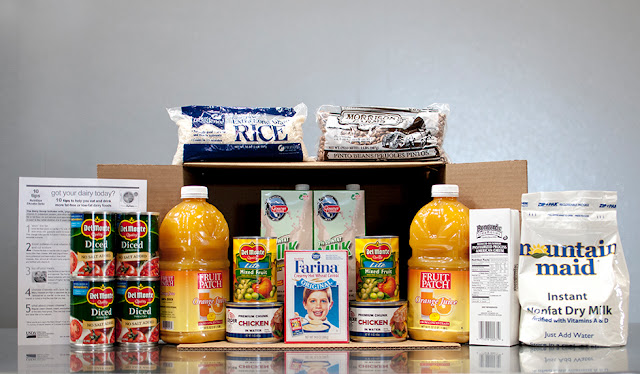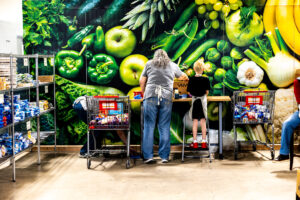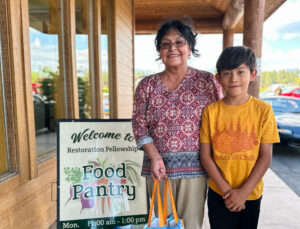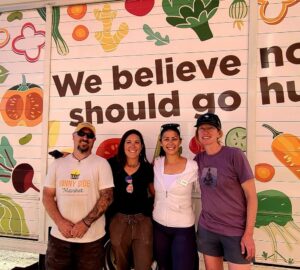We receive millions of pounds of donated food from many places, but we have to pay to get the food to us, whether our drivers pick it up locally or we pay a trucking company to transport the food from another part of the country. Here’s how it all works:
The largest source of the food that we receive comes from Feeding America. Being one of 200 Feeding America food banks nationwide is a win, win, win situation. Feeding America works with national manufacturers and growers who donate truckloads of food, we pay for the food to be processed, transported, stored, and distributed locally, and people in need have access to a variety of great food that might otherwise have gone to waste.
Why do national manufacturers donate food? Sometimes products aren’t manufactured or labeled correctly. For example,
- General Mills recalled 1.8 million boxes of Cheerios labeled gluten-free because there was a chance they weren’t actually gluten-free. We received a truckload of this perfectly good cereal and our volunteers relabeled the packages with accurate ingredient information.
- We received peanut butter that was made in the U.S., but labeled for the Japanese market.
- We also receive fresh produce that is deemed “ugly,” which means that grocers don’t accept because it may be too small, too large, or misshapen, and they know that consumers won’t purchase it. We love ugly food!
Reclamation food comes from local grocery stores, restaurants, local farmers, and other businesses. This food could have damaged packaging, could be near the expiration date, or is not moving off the shelves fast enough. This is perfectly good, safe food that would otherwise go to waste. Our drivers pick up the food throughout the week and distribute it to our partner agencies, who give it to people who need it.
 We receive donated food from community members. This source of food represents a small but important portion of the more than 21 million pounds we distribute each year. On average, food-drive-food accounts for about 500,000 pounds of food annually.
We receive donated food from community members. This source of food represents a small but important portion of the more than 21 million pounds we distribute each year. On average, food-drive-food accounts for about 500,000 pounds of food annually. We also receive grant funding that is earmarked for food, so we purchase that food at wholesale and then distribute it for free to our partner agencies or through programs like Mobile Food Pantries and School Pantries.
Lastly, in partnership with USDA Foods, we administer The Emergency Food Assistance Program (TEFAP) and the Commodity Supplemental Food Program (CSFP). These programs provide nutritious food to seniors and people in poverty. We have an appropriation of dollars for our service area that is based on the population, poverty levels, the number of people that have applied for food assistance, etc. and we use this appropriation to order commodity food from the USDA. The USDA gets this food through state contracts with vendors. The food comes to Care and Share, is packaged by our volunteers, and delivered to our partner agencies based on the number of people they serve. This year, we are on track to distribute more than 4 million pounds of food through TEFAP and 800,000 pounds through CSFP!







